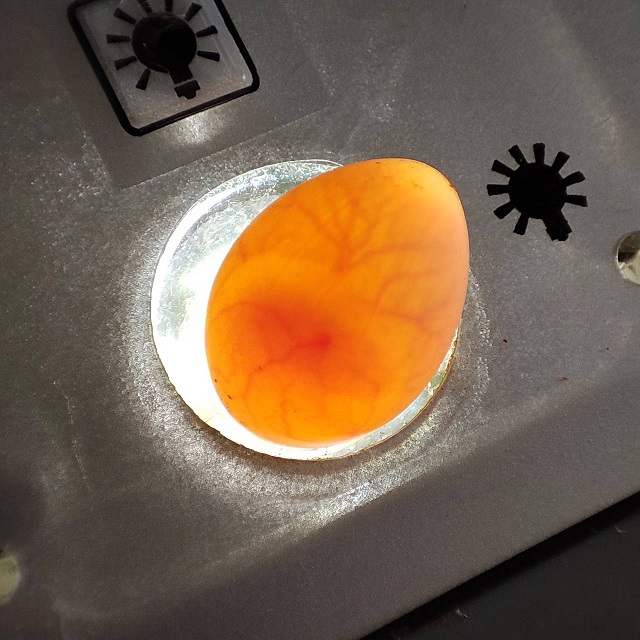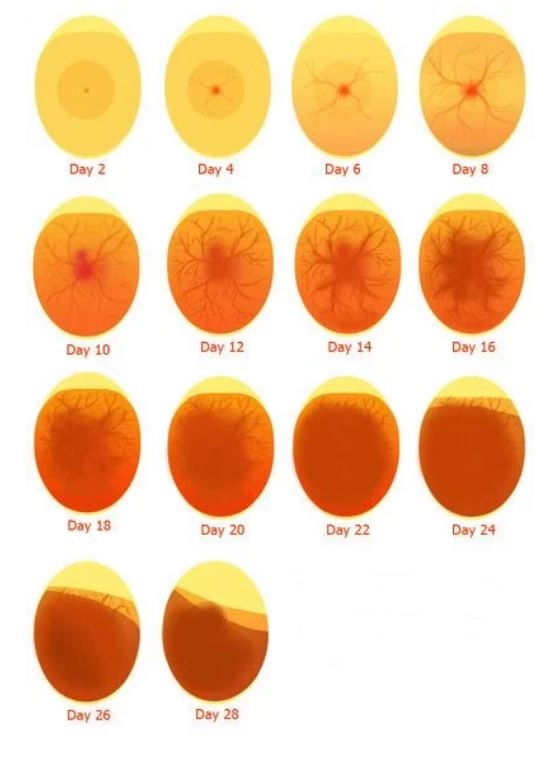When you collect eggs from your hens, one of the first questions you might ask is, "Is this egg fertilized?" Whether you’re a backyard chicken keeper or someone new to raising hens, understanding how to determine if an egg is fertilized can be important, especially if you’re interested in hatching chicks. In this article, we will explain how to identify whether a hen’s egg is fertilized or not, and what steps you can take to check for fertilization.

A fertilized egg is an egg that has been fertilized by a rooster's sperm. When a hen lays an egg, it typically has the potential to be fertilized if she has mated with a rooster. However, not all eggs are fertilized. Here’s a quick breakdown of what happens:
Hen Lays an Egg: The egg is produced from the hen’s ovary, and as it moves through the reproductive tract, it gets its shell.
Fertilization: If a rooster mates with the hen before the egg is laid, the egg can be fertilized. The fertilization process happens in the hen’s oviduct, just after the egg yolk is released.
Unfertilized Eggs: If there’s no rooster around, the egg will still be laid, but it won’t be fertilized. These eggs are what you typically buy at the grocery store.
But how can you tell if the egg is fertilized?

One of the most popular methods to check if an egg is fertilized is candling. This technique involves shining a bright light through the egg to see inside. It’s most effective in the first few days after the egg has been laid.
Step 1: Turn off the lights in the room to make the egg stand out.
Step 2: Hold the egg over a bright light (such as a flashlight or a special egg candler). The light should be strong enough to shine through the egg's shell.
Step 3: Look for signs of fertilization:Tip: Candling works best after about 5-7 days of incubation. At this stage, the embryo should have developed enough to see the blood vessels or the small dark spot that indicates fertilization.
If the egg is fertilized, you might see a small white dot or bullseye on the yolk. This is the embryo, and it’s the early stages of a chick developing.
You may also notice veins (which indicate that the egg has started to develop).

Another way to know if a hen’s egg is fertilized is to incubate it for a period of time. During this time, you can observe if any development occurs inside the egg. If you want to do this, you will need an incubator or a warm place where the eggs can be kept at a consistent temperature (around 99-102°F or 37-39°C).
Step 1: Place the egg in an incubator or a warm area, ensuring it is not disturbed.
Step 2: Leave the egg in the incubator for 3-5 days.
Step 3: After a few days, use the candling method to check if you can see signs of embryo development (such as veins or a developing embryo).
If you notice no signs of growth, it is likely that the egg was not fertilized.
If you're still unsure about whether the egg is fertilized, you can crack it open and inspect the contents. This method is typically used as a last resort.
Step 1: Crack the egg into a bowl.
Step 2: Look for the germinal disc (the small white spot) on the yolk. In a fertilized egg, the germinal disc will be larger and more distinct.
If the disc has a visible bullseye pattern or if it’s slightly raised, this could indicate fertilization.
If the germinal disc is just a small white spot without any noticeable pattern, the egg is likely unfertilized.
If you have a rooster in your flock, his behavior will also give you clues about the fertility of the eggs. Roosters mate with hens regularly, so if you see your rooster actively mating with the hens, it is highly likely that the eggs are fertilized. However, if you don’t have a rooster, you will only be getting unfertilized eggs, as no mating occurs.
Yes, fertilized eggs are safe to eat, as long as they are handled and cooked properly. The fertilization process does not change the nutritional value or safety of the egg, and you won’t notice any difference in taste or texture. Most fertilized eggs, if not incubated, will not develop into chicks. So, whether you eat a fertilized or unfertilized egg, it is essentially the same.
Hens lay fertilized eggs only when they have mated with a rooster. After mating, the eggs can be fertilized for several days, and the hen may continue laying eggs that are fertilized. If you want fertilized eggs for hatching, make sure to have a rooster in your flock and allow the hens to mate regularly.

Determining if a hen's egg is fertilized is fairly simple and can be done using various methods, including candling, incubation, or cracking open the egg. Most backyard chicken owners who are interested in hatching chicks will rely on candling as the most effective and non-invasive way to check for fertilization. However, if you’re not interested in hatching eggs, there’s no harm in eating fertilized eggs—they’re just like any other egg.
If you're raising chickens for egg production and want to make sure you're getting fertilized eggs, keeping a rooster in the flock is the key. Understanding the fertilization process helps you make informed decisions about your flock and ensures you’re getting the most out of your chicken-keeping experience.
animal tags: egg
We created this article in conjunction with AI technology, then made sure it was fact-checked and edited by a Animals Top editor.